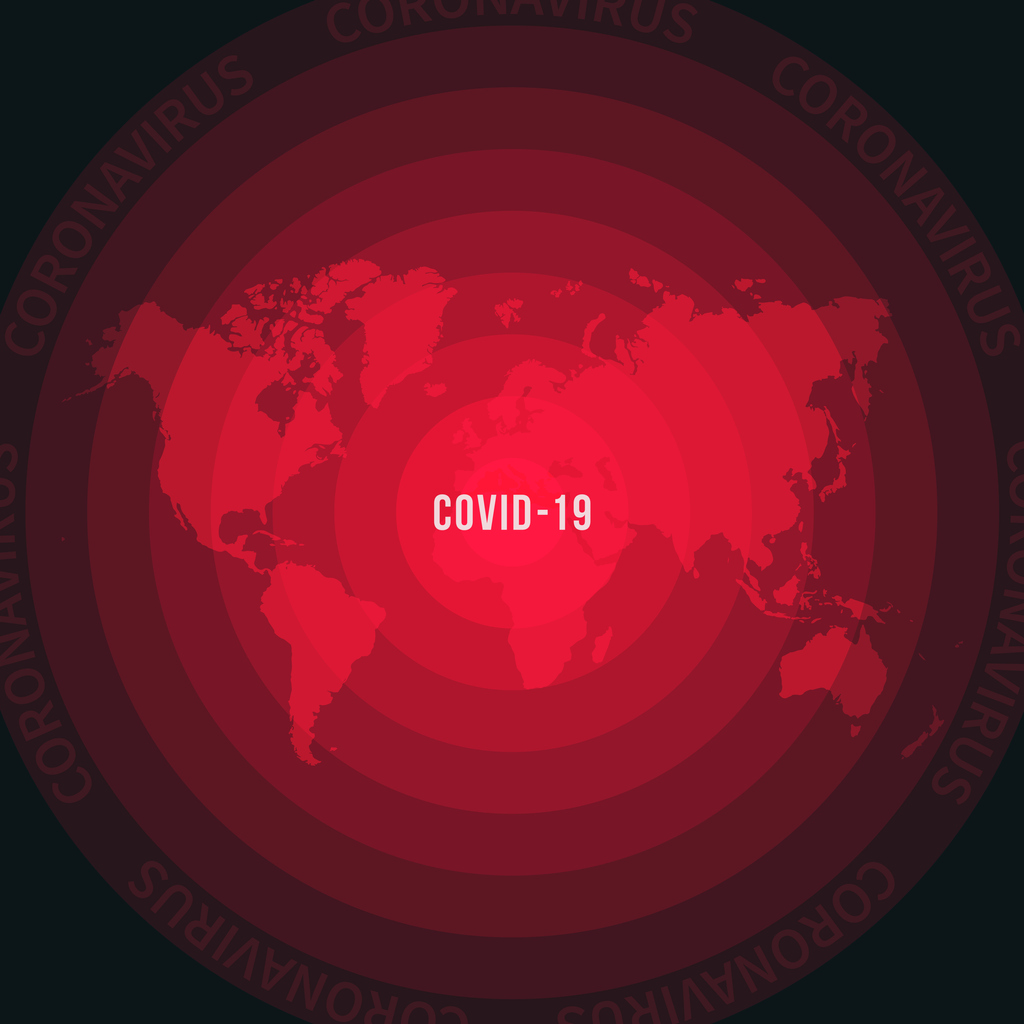National Security Task Force December 2020 Report*
The COVID-19 pandemic that temporarily shut down much of China’s production capacity is the latest in a series of disruptions of global supply chains. Earlier events that created supply chain problems include China’s restrictions on exports of rare earth elements in 2010, the earthquake and tsunami in Japan in 2011, and the U.S.-China trade war in 2019.1 While the shock of the pandemic is causing reassessments of supply chain risks throughout the economy, and companies are diversifying mission-critical production away from China to elsewhere in Asia and Mexico, the resilience of the supply chains that support national security activities merits special attention.
This report begins with a survey of practices to strengthen supply chains generally throughout the economy, and then turns to the particular problems in national security supply chains, especially rare earth elements and microelectronics.
Supply chain resilience
Supply chains can substantially improve efficiency, by sourcing production and materials to firms with advantages such as scale, expertise, technology, and labor costs. Open markets and freer trade in intermediate goods have, on the whole, brought immense benefit to American consumers and producers. These cost advantages come with risks and potential vulnerabilities. Purchasing from the lowest cost producers leads to concentration of supply, often in countries with high political risks, including China. Global supply chains can be very large and complex; it can be difficult to be fully aware of vulnerable links with potential for major problems. To properly balance risk and reward, political risk assessment and mitigation should be a priority of senior industry leaders and government officials.
As global supply chains have become critical to many businesses, a number of operational best practices have been developed (but in many cases have not yet been fully adopted and implemented) to reduce vulnerability to disruption and respond quickly when disruptions occur:
End-to-end visibility and connectivity. Supply chains are often complex. Each first tier supplier depends on its own supply chain. Case studies of disruption often reveal that enterprises do not fully appreciate their dependence on fifth tier suppliers of hard-to-replace products.2 Connecting supply chain partners with communications networks that provide real-time information on demand forecasts, purchase orders, production, transport, and deliveries can generate a single version of the truth and, if rigorously implemented, can allow enterprises and their suppliers to cooperate, adapt, and respond to disruption in a coordinated way.3
Collaboration with partners. Treating suppliers as partners is crucial to supply chain resilience. The success of individual firms depends on the success of the entire enterprise. The best suppliers and the best customers are highly sought-after; it is important to establish a relationship of mutual respect for each other’s success.4
Evolution, agility, and learning from setbacks. The supply chains of the most resilient enterprises are agile and constantly evolving, sensing and responding to changes in the business environment. Successful enterprises anticipate potential problems and craft contingency plans, and carefully investigate mishaps when they occur, viewing every challenge as an opportunity to learn.5
Current examples of supply chain resilience and risks. In a market economy, the decisions of private enterprises are key determinants of supply chain resilience. But there are a variety of examples of public interventions that have been undertaken to mitigate supply chain risks. The Strategic Petroleum Reserve was established by the U.S. government more than 40 years ago to reduce the impact of disruptions of supplies of petroleum products, and serve as a deterrent to oil supply cutoffs. Over the years sales and exchanges, both domestic and in coordination with multilateral partners, have been used to mitigate the impact of disruptions caused by conflict in the Middle East and by Gulf coast hurricanes. Operation Warp Speed accelerated the development of COVID-19 vaccines by investing in the development of promising vaccines, committing to purchase hundreds of millions of doses, investing in their production before their safety and efficacy was demonstrated, and streamlining regulation of clinical trials. Other government supply chain stabilization attempts developed in the name of national security have had more questionable impacts, such as the U.S. Sugar Program agricultural quota system.6
But supply chain risks remain. As this is written in January 2021, automobile assembly plants are shut down worldwide as supply chains for microprocessor chips are not able to meet the demand for production of both automobiles and consumer electronics.
Increased attention to supply chain resilience in response to COVID-19
New manufacturing technology, changing demographics and rising wage rates in China, and economic tensions between the United States and China have been affecting global trade for several years. In 2019 many companies adapted in response to the U.S.-China trade war, which felt at the time like a major disruption, by reducing imports from China and increasing imports from Asia and Mexico.78
The COVID-19 pandemic is causing disruption of a new order of magnitude, forcing companies to go much further in re-thinking their sourcing strategies. China is so central to the supply chain strategies of U.S. companies that 938 of the Fortune 1000 had tier one or tier two suppliers in the provinces of China initially impacted by the virus.9 Companies are increasingly motivated to spread their risks, rather than putting all their eggs in the lowest cost basket. Many will diversify away from exclusive dependence on China, but keep a substantial presence in China as they diversify, mainly to other countries in Asia. In electronics, for example, China is the dominant supplier, and likely to remain so. And many firms wish to have a strong presence in the Chinese consumer market, which provides an incentive to source production there. So as supply chains are restructured to build resilience, reduce risk, and keep down costs, many will adopt a “China plus” strategy, diversifying to other countries while retaining a significant position in China.
In addition to diversifying some sources of supply from China to other countries, measures to develop better supply chain resilience include:
Sourcing from reliable regions. Localizing the supplier base within a region whose trade links are not likely to be interrupted for political, economic, transport, or other reasons is an alternative to global networks that can increase resilience. Toyota has long encouraged suppliers to co-locate near its assembly facilities. China itself has developed its supply chains in certain industries (including rare earth elements and electronics) to ensure that all key components are produced domestically.1011
Develop second sources or safety stocks. Concentration of supply in China for many industries is the result of manufacturers’ refusal to buy from high-cost producers. Establishing alternative sources can be costly, but provides a benefit of increased resilience. Long-term purchasing commitments could give alternative suppliers an incentive to invest and to offer competitive prices. In some cases, a safety stock could be sized to account for the time necessary to develop an alternative source.12 Establishment of safety stocks could also reduce incentives for China’s leaders to weaponize sourcing from China.
Stockpile designs, data, and templates in digital form. Rather than stockpile finished products, companies can stockpile the information necessary to establish alternative sources for materials and components, including reliable procedures to provide assurance that products meet specifications and required certifications.13 If a need to establish an alternative source should arise, stockpiled information can facilitate marshaling a workforce and materials to stand up a new source.
Resilience for national security supply chains
The COVID-19 pandemic has increased awareness of the need to ensure that enterprises critical to national security are not vulnerable to supply disruption. While firms in the commercial sector can suffer painful financial losses when supply chains are broken, a calculus they accept when establishing them, the consequences in the national security sector can be more serious. Yet a 2018 assessment by the Department of Defense of the resilience of its supply chains found “a surprising level of foreign dependence on competitor nations exists,” and “many sectors continue to move critical capabilities offshore in pursuit of competitive pricing and access to foreign markets,” precisely the same incentives that encourage commercial firms to continue to source critical production and materials in other countries, particularly China.14
Many of the steps outlined above to increase resilience of supply chains generally are also applicable to national security supply practices. In particular, end-to-end visibility and connectivity are crucial. Such transparency, extended to all tiers, enables a full appreciation of potential vulnerabilities, provides an ability for supply arrangements to evolve as circumstances change, generates early real-time information on potential problems, enables supply arrangements that are agile and can adapt quickly to events, and facilitates the production of contingency plans. End-to-end visibility and connectivity raise cost and cyber security issues, especially for smaller suppliers which may be critical but do not have the resources to meet high security standards. Assessment of risks, costs, and who bears them, can be complex.
Some measures can be adapted to the special needs of national security enterprises:
Diversify away from China to allies and partners. Attempting to source all national security related production in the United States would be difficult, costly, and take time. A more detailed analysis of resilience, beyond the scope of this paper, would differentiate between supply chains in specific segments of the defense establishment. Tolerances would vary, for example, for supply chains supporting medical supplies, critical infrastructure, weapons, sensors, and space. Degrees of comfort with foreign partners would vary as well.
In many cases a promising approach to diversifying away from China is to encourage participation by allies and other reliable partners, which adds resilience while retaining some of the efficiencies of international supply chains, and whose potential vulnerabilities can be assessed and mitigated if all the elements of the chain are fully transparent and well understood. Sourcing from allies and partners has the additional benefit of encouraging purchases from the United States.
U.S. government support for alternative suppliers. U.S. government support may be necessary to establish alternative suppliers for critical national security needs, and to sustain them in the face of potential Chinese efforts to undercut them. This support can take the form of tax advantages, purchase commitments, direct investment, subsidies, or regulatory streamlining to encourage new suppliers of critical components that would not otherwise be economically viable.15 Thoughtful and appropriate government support can encourage creation of new capacity on a scale that would meet defense needs. A key question is how to pursue the government’s long-range planning horizon, and public cost-benefit calculus, while preserving underlying market dynamics as much as possible. Some forms of government support (e.g. purchase commitments) likely preserve some of the advantages of competitive commercial markets more than others (e.g. subsidies). Purchase commitments, however, require budget stability, including Congressional authorization and appropriation of multi-year programs, which Congress has been reluctant to grant.
Cyber supply chain risk. There are a number of cyber risks. The supply chains supporting U.S. government networks are potentially vulnerable, as the recent SolarWinds compromise demonstrates. In addition, the integrity of goods produced by a supply chain could be compromised at some point in the chain. And the communications network that links the tiers of a supply chain together could be compromised. Addressing and mitigating these risks incurs costs and requires the priority attention of senior management in industry and government.
Rare Earth Elements and Microelectronics
These two specific cases of vulnerability of supply chains critical to national security are examined here in more detail:
Rare earth elements. Rare earth elements are plentiful, but processing them requires substantial effort and investment, and raises environmental issues. Rare earth elements have unique characteristics, are in high demand, and are vital to the manufacture of many modern technologies, including defense systems. They are essential ingredients in computer memory, cell phones, magnets, and rechargeable batteries, and in defense systems such as electronic displays, radar and sonar systems, guidance systems, and lasers. Lax environmental regulations, major investment, and aggressive pricing have enabled China to dominate production and processing of rare earth elements.16
Diversification of the rare earth element industry is well underway. China’s share of the production of rare earth concentrates (the initial product from mining operations) is 62%, down from 98% in 2010.17 The U.S. share of production of rare earth concentrates has grown from 0 to 12% with the reopening of a mine in California, and other mines are being developed.
Most processing of rare earth elements, however, continues to be done in China (even for concentrates mined in the United States). Considerable work remains to be done to expand capacity outside China to separate rare earth concentrates into oxides of individual elements, and to further refine these materials into metals and finished products such as magnets. DOD has begun to use its Defense Production Act authority to support domestic processing capability, has recently awarded funding to support rare earth processing facilities in Texas and California, and is funding development of extraction and refining processes that are less environmentally harmful.18 DOD has proposed legislation, which merits strong support, to allow it to increase its investments in rare earth element production and processing in light of current geopolitical tension.19
In addition to maintaining its existing stockpile and expanding it to cover at least a year of defense industry needs, DOD could encourage its contractors and their supply chains to use rare earth elements from the United States and partners such as Japan, Australia, Canada, and the UK.20 This would increase the cost of defense equipment, but also encourage investment in production and processing outside China. Other steps the U.S. government could take would be to help secure licenses for key processing and manufacturing technologies held by foreign entities, and to get the United States into a position to commit to lead in deep seabed mining, a promising source of rare earth elements regulated by the U.N. Convention on the Law of the Sea, to which the United States is not a party.
In addition to the rare earth elements, lithium and cobalt raise similar supply chain issues. Demand for lithium and cobalt is rising rapidly, as they are essential components in the batteries and electric motors that support electric vehicles, renewable energy, and cell phones and other electronic devices. The largest lithium producers are Australia, Chile, China, and Argentina, and China has substantially invested in lithium production in Australia, Chile and Argentina. The largest cobalt producer is the Democratic Republic of the Congo, which raises stability concerns, and on the order of half of the production in the Congo is owned by Chinese firms. China has made strategic long-term investments to protect its supply chains for lithium-ion batteries and electric vehicles. Private western firms with shorter time horizons have made different calculations.
Microelectronics. China has developed a microelectronic ecosystem so extensive that half the world’s electronics manufacturing capacity is based in China.21 (An exception is microprocessor chip technology; the most advanced chips are produced in Taiwan, South Korea, and the United States.) Electronic components for defense equipment are typically designed in the United States with some of the manufacturing sourced to China.
A first step toward establishing a competitive microelectronic ecosystem in the United States would be to add state of the art domestic microprocessor chip production capacity. The United States, in part benefitting from the SEMATECH R&D consortium efforts of the 1980s and ‘90s, remains a leader in microchip design, microchip manufacturing equipment, and intellectual property, but our global share of leading edge microchip manufacturing capacity has declined rapidly given growth in Asia. And China continues to invest heavily in self-sufficiency and leadership, including a commitment by Xi Jinping of $1.4 trillion through 2025 for Chinese microelectronic infrastructure and technology, and the $50 billion China Integrated Circuit Industry Investment Fund aimed at stimulating its domestic microelectronics industry.
In May, 2020, Taiwan Semiconductor (TSMC), the world’s largest semiconductor foundry, and a technology leader, announced its “intention to build and operate an advanced microprocessor production facility in the United States with the mutual understanding and commitment to support from the U.S. federal government and the State of Arizona.”22 The new facility would produce state of the art (5 nanometer technology) products. TSMC predicts the new facility will lead to “a vibrant and competitive U.S. semiconductor ecosystem that enables leading U.S. companies to fabricate their cutting-edge semiconductor products within the United States and benefit from the proximity of a world-class semiconductor foundry and ecosystem.”
This joint project of TSMC and the federal and state governments could be a first step in building a more autonomous U.S. microelectronic supply chain.23 It would not be possible without government investment, given the high barriers to entry into this sector and the economic advantages of production in Asia. TSMC has made this clear publicly: “U.S. adoption of forward-looking investment policies to enable a globally competitive environment for a leading edge semiconductor technology operation in the U.S. will be crucial to the success of this project.”
The construction of this state-of-the-art TSMC microprocessor manufacturing facility has the strong support of the U.S. departments of defense, state, and commerce and the state of Arizona. Government investment in some form (tax incentives, purchase commitments, or direct investment) is necessary to offset the additional cost of locating this facility in the United States rather than in Asia. DOD has authority to cover this differential, but as yet the funding has not been appropriated. We have seen instances in other industries where sustained periods of low domestic production can lead to loss of know-how, significantly increasing the costs of trying to regain the capability down the line.24 This project merits support, in part as insurance against that happening for microchip manufacturing.
Another opportunity to stimulate the growth of domestic capacity would be to encourage Samsung to locate a similar state-of-the-art microprocessor manufacturing facility in Texas, around which another microelectronic manufacturing ecosystem could grow.
As U.S. microelectronic ecosystems grow, DOD could encourage its contractors and their supply chains to use components from the United States and reliable partners. Transparency could also contribute to more resilient supply chains – venders could be required to identify every entity involved in producing each component.
Building resilience into national security supply chains is a difficult but solvable problem, requiring time, investment, and legislation. There are no technical obstacles; we have the knowhow to make the systems we design, but will need to invest in manufacturing capacity and workforce skills to make them in a more resilient way.
*This report is the result of a collective effort under the auspices of the National Security Task Force. David Fedor, Admiral James Ellis, Admiral Gary Roughead, and Michael Boskin participated in the drafting of this report, which also benefitted from reviews and comments of other participants in the Task Force.
















